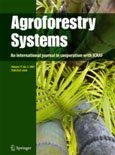Interviews with all the households in the Agropastoral Zone (ZAP) of Yalé, southern Burkina Faso, were conducted in 1994 and again in 1997 to assess the impacts of a tsetse control programme implemented from 1994, using insecticide-impregnated targets and pour-on treatments of all cattle with deltamethrin 1%. In the absence of health and productivity monitoring, data were collected in single-visit surveys in order to generate quantitative estimates of relevant reproductive performance variables for cattle and to assess changes in the inputs used and outputs produced. The results indicate a 25% increase in herd size and an increase in the number of oxen from 0.1 to 1.1 per household; a reduction in mortality from 63.1% to 7.1% and reductions in the rates of abortions and stillbirth of 55.9% and 51.3%, respectively; and an increase in the rate of live births of 57.6% and in the milk yield from 0.2 to 2.2 litres/cow per day in the dry season. These results show the dramatic impacts that trypanosomosis control can have on Zebu cattle exposed to high tsetse challenge. Well-designed surveys can be a cost-effective way to obtain estimates of productivity impacts that can be used to simulate projections of herd growth and meat and milk production in herd models. While there are many confounding factors associated with farmers' perception of a gain in productivity, these estimates form a useful alternative to subjective assessments in modelling the economic benefits of tsetse and trypanosomosis control.
DOI:
https://doi.org/10.1023/A:1005286631470
Altmetric score:
Dimensions Citation Count:























